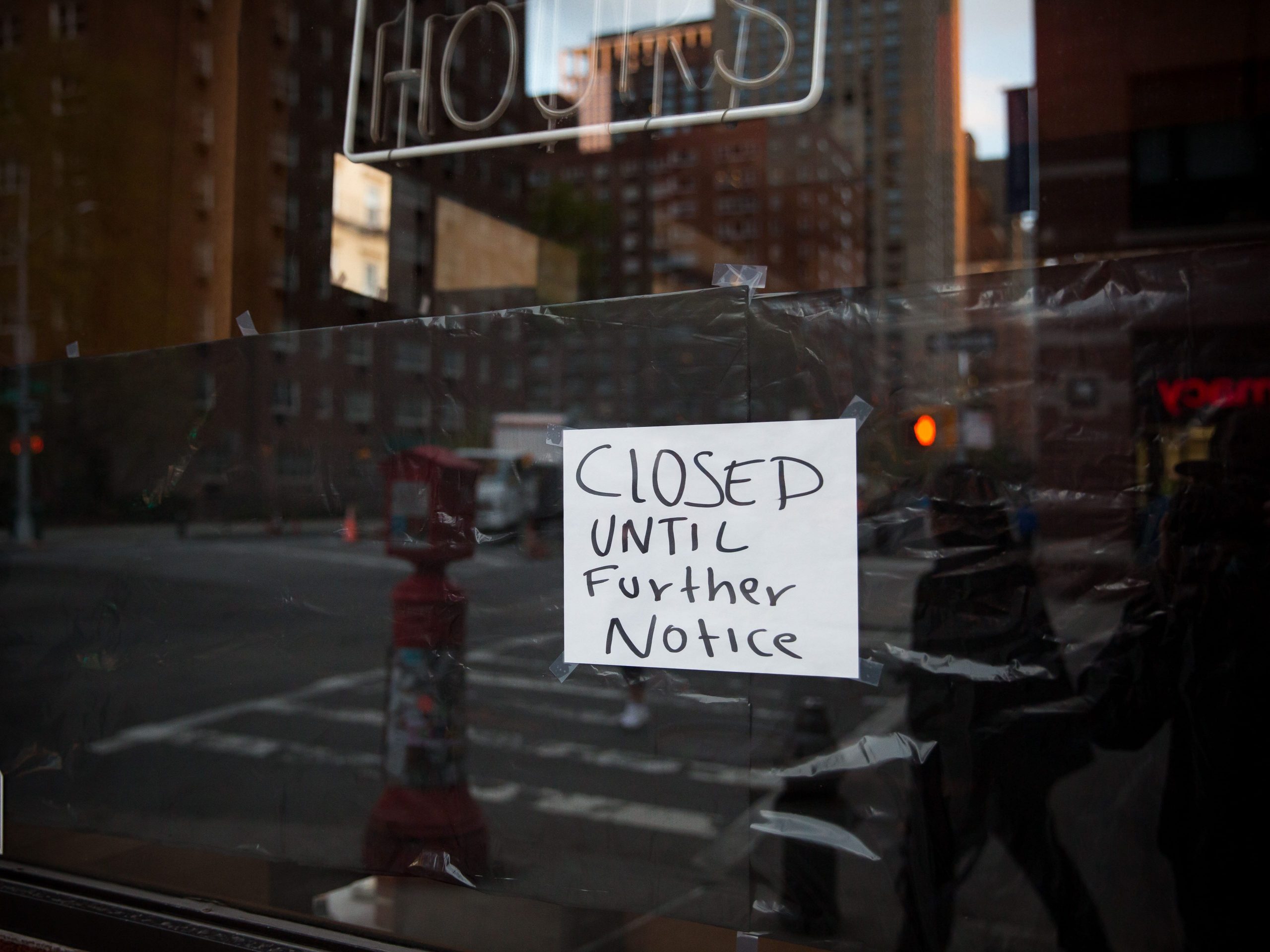
Michael Nagle/Xinhua/Getty Images
- Chris Wallace brought up the idea of a “K-shaped” economic recovery while moderating Tuesday’s night’s presidential debate between President Donald Trump and former Vice President Joe Biden.
- The K shape suggests the wealthy are recovering and the lower-earning are not.
- In the ongoing US recession, industries like technology, retail, and software services have largely recovered and begun rehiring, while travel, entertainment, hospitality, and food services have continued to decline past March levels.
- The result is that low-wage jobs like restaurant staff, transportation workers, and cleaners are least likely to come back.
- Visit Business Insider’s homepage for more stories.
The economy made up a large portion of the first 2020 presidential debate Tuesday night, specifically whether the country is recovering from its current recession.
The debate’s moderator, Chris Wallace, brought up the idea of so-called K- and V-shaped economic recoveries during the debate between President Donald Trump and former Vice President Joe Biden. In the past, Biden has referred to the “K-shaped” recovery, first coined by economists, where high-income Americans have seen jobs come back and income grow, while middle- and lower-class people have not.
“Millionaires and billionaires like him in the middle of the COVID crisis have done very well. Billionaires have made another $300 billion because of his profligate tax proposal, and he only focused on the market,” Biden said during the debate. “But you folks at home, you folks living in Scranton and Claymont and all the small towns and working class towns in America, how well are you doing?”
Here’s what the “K-shaped” recovery means and how that affects jobs and economic inequality.
What is a K-shaped recovery?
The US entered recession in February, per the National Bureau of Economic Research, ending a record 128-month economic expansion.
Since it became obvious the coronavirus pandemic would create a recession, economists have debated the "shape" it might take, with big implications for the future of the economy. Would it be a "V" shape, with a steep decline followed by a rapid recovery; a "U" shape, with a softer recovery; or the dreaded "L" shape, with no recovery at all?
Economists and analysts use letters like V, L, and I to describe their projections for the length of the recession and potential recovery, Business Insider's Ben Winck reported back in March.
A V-shaped recovery, for instance, is the most optimistic. A U shape is similar but suggests the period of unemployment and low economic activity will remain longer than in a V-shaped recovery.
L- and I-shaped recovery outlooks are much more dire, suggesting the high unemployment and low spending will have other ramifications, such as debt defaults and overwhelmed health systems.
A K-shaped recovery is somewhere between a V and an L — depending who you are. In the ongoing US recession, industries like technology, retail, and software services have recovered from the industry and begun rehiring, while the travel, entertainment, hospitality, and food-services industries have continued to decline past March levels.
"The pandemic's uneven economic impact on industries and workers has been stark," the US Chamber of Commerce's president, Suzanne Clark, wrote in a blog post on September 3 called "The K-Shaped Recovery and the Cost of Inaction."
What does a K-shaped recovery mean for jobs?
In the second half of March, after the rapid spread of the coronavirus prompted officials to shut down businesses and schools, nearly 10 million Americans filed new claims for unemployment insurance.
While the record job loss hit the travel and hospitality industries, some economists assumed the US would bounce back once businesses reopened. The result would have been a V-shaped recovery.
But the US has yet to control the virus to the point of a full reopening. The country has recorded the most infections of any country, with more than 7 million, and a resurgence of infections has been tied to hasty restaurant and business reopenings.
The stagnated recovery has meant the restaurant and travel industries have continued to decline, as more and more chains and restaurants have gone bankrupt. While job growth has picked back up slowly, the unemployment rate is still 8.4% nationally.
Clark wrote in her early-September blog post that the financial-services sector had already recovered 94% of its pre-pandemic employment, while the leisure and entertainment industries had brought back only 74% of their former workers. The result is that low-wage jobs like restaurant staff, transportation workers, and cleaners are least likely to recover.
Get a free 3-month subscription to Business Insider when you buy a ticket for the Business Insider Global Trends Festival, a virtual conference of ideas on October 19-23.

